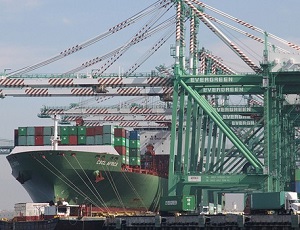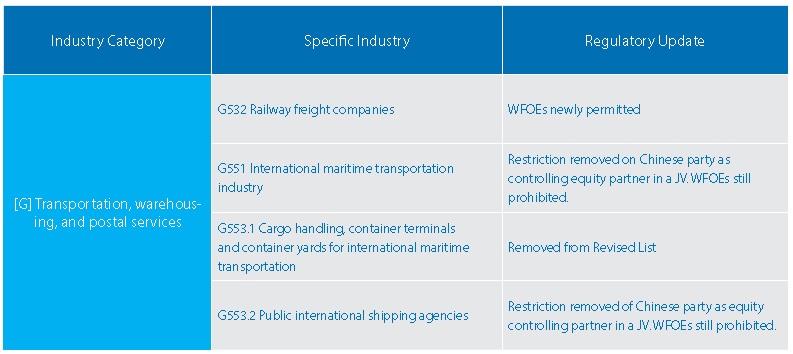Logistics in the Shanghai Free Trade Zone

By Matthew Zito and Maria Kotova
The benefits of the Shanghai Free Trade Zone (FTZ) for the logistics industry have the potential to affect all businesses that rely on moving goods to or from China. In terms of numbers, prior to their incorporation as the Shanghai FTZ, the city’s four designated bonded areas were home to over 11,000 trade and logistics-related enterprises, based on CBRE figures. While the FTZ is often touted as a centerpiece in the transformation of Shanghai into a regional financial center, its promotion of the city as a logistic hub is equally if not more significant.
With its amalgamation of four bonded zones—the Waigaoqiao Free Trade Zone, Waigaoqiao Free Trade Logistics Park, Yangshan Free Trade Port Area and Pudong Airport Comprehensive Free Trade Zone—the FTZ has been shaking the traditional concentration of logistics operations in the city’s Hongkou District, where more than 3,500 companies in related industries contribute roughly 28 percent of the district’s GDP.
According to CBRE, high-quality warehousing space in the FTZ totaled 780,000 m2 in October 2013, and this figure is expected to increase by 210,000 m2 by 2015 with the completion of several high-profile projects. As of 2013 Q3, there remained a strong discrepancy in vacancy rates between logistic properties in Puxi (1.4 percent) and Pudong (22.4 percent), Shanghai’s old and new urban districts, respectively.
The FTZ’s original Framework Plan introduced the following policies in direct connection with the logistics industry:
- Relaxation of limitations on the share of foreign ownership in shipping enterprises, under which wholly foreign-owned vessel management may be established in the Shanghai FTZ.
- Relaxation of restrictions on cargo relay via Shanghai Port by foreign ships owned or indirectly owned by Chinese-invested enterprises.
- Relaxation of limitations on the share of foreign ownership in ship management enterprises, under which wholly foreign-owned enterprises may be established in the Shanghai FTZ.
- Establishment of an international ship registration system, under which a controlling share of foreign investment is permitted for the registering entity. Additionally, the registration system newly relaxes “age of vessel” standards and institutes a filing rather than approval system for foreign crew members. Lastly, the system introduces a dual port of registry system based on the duty status of ships and expands the registry categories to include the financial leasing of vessels.
RELATED: Logistics, Warehousing and Transportation in China (Part 1 and 2)
More recently, the Revised Negative List introduced further liberalizations to the industry:
Ship Transport
In terms of ship transportation, Shanghai retains a wide margin in its title as the world’s busiest port in terms of cargo volume (seven of the ten busiest are located in China). In 2013, container throughput at Yangshan Port rose 3.3 percent to a record 33.6 million TEUs, having previously surpassed Waigaoqiao Port in late 2012. As an indication of the potential for further growth in the industry, only 5.5 of cargo was classified as international transshipment, compared with over half of shipments in Hong Kong. With the simplified Customs procedures adopted in the FTZ, this imbalance is likely to correct itself over the coming years.
One of four bonded zones comprising the FTZ, Yangshan Free Trade Port Area offers state-of-the art facilities and exemptions on import tariffs as long as goods remain within the zone. The port features 16 modernized berths with a total quay length of 5.6 kilometers and is joined to the mainland by the 32.5 km Donghai Bridge. Expansion of the port to a total area of 14.16 km2 is to be completed by December 31, 2015, adding seven additional 50,000 to 70,000-ton berths. All companies registered before this date engaged in domestic carriage, warehousing, or loading and unloading services can obtain an immediate refund of the levied taxes.
While Waigaoqiao Port remains a crucial part of the broader logistics framework of Shanghai and China, there is indication that the area has reached its saturation point, with warehouse rents significantly higher than Yangshan and little room for future construction. However, the savings on logistics costs offered by Waigaoqiao’s centralized location and its one-stop shop for international freight forwarders to arrange and organize shipments will ensure that it remains a competitive alternative to Yangshan well into the future.
Air Transshipment
Air Cargo into the FTZ flows through the Pudong Airport Comprehensive Free Trade Zone, where giants such as China Cargo Airlines, Lufthansa Cargo and UPS have all established operations. DHL was selected as the first company to set up international transshipment operations in the Pudong Airport Comprehensive FTZ (part of the larger Shanghai Free Trade Zone), including a new international transit air route linking Leipzig to Tokyo.
This entails 24-hour processing of overseas cargo (receiving, sorting, and dispatching), in cooperation of Shanghai Airport Customs and Shanghai International Airport Entry-Exit Inspection & Quarantine Bureau. Similar to elsewhere in the FTZ, air shipments through Pudong Airport are unimpeded by customs procedures or import duties. With international transshipments surging as a result, companies like DHL plan to add more routes in the coming years to keep up with demand.
Customs
The FTZ offers several Customs policies to benefit logistics operations in the Zone. Companies are afforded the option of delivering overseas shipments to the Zone using just a shipping bill, rather than a formal customs declaration. As of March of this year, Shanghai Customs has offered a paperless declaration system in the FTZ, allowing companies to submit electronic documentation rather than apply in person.
Enterprises importing goods into the Zone may decide on the timing of the declaration and inspection process—reduced from three days to one day (or even a half day)—before goods are transferred outside the Zone. Conversely, the FTZ allows for exemptions on export goods to be obtained faster when goods are delivered to bonded warehouses within the zone.
Whereas previously, China Inspection and Quarantine (CIQ) monitored cargo from multiple angles, in the FTZ only the status of the cargo (bonded or not bonded) is monitored, and goods with different status can be placed together in one warehouse. The requirement to move goods outside of the zone within six months of entry, as applying to other bonded areas in China, has been abolished in the FTZ.
Lastly, in April of this year, the General Administration of Customs launched a “single window” pilot project at Yangshan Port integrating functions which outside the zone are separately executed by CIQ, Border Control, and Customs.
 This article is an excerpt from the September 2014 edition of China Briefing Magazine, titled “Revisting the Shanghai Free Trade Zone: A Year of Reforms.” In this issue, we revisit the Shanghai FTZ and its preferential environment for foreign investment. In the first three articles, we highlight the many changes that have been introduced in the Zone’s first year of operations, including the 2014 Revised Negative List, as well as new measures relating to alternative dispute resolution, cash pooling, and logistics. Lastly, we include a case study of a foreign company successfully utilizing the Shanghai FTZ to access the Outbound Tourism Industry.
This article is an excerpt from the September 2014 edition of China Briefing Magazine, titled “Revisting the Shanghai Free Trade Zone: A Year of Reforms.” In this issue, we revisit the Shanghai FTZ and its preferential environment for foreign investment. In the first three articles, we highlight the many changes that have been introduced in the Zone’s first year of operations, including the 2014 Revised Negative List, as well as new measures relating to alternative dispute resolution, cash pooling, and logistics. Lastly, we include a case study of a foreign company successfully utilizing the Shanghai FTZ to access the Outbound Tourism Industry.
Asia Briefing Ltd. is a subsidiary of Dezan Shira & Associates. Dezan Shira is a specialist foreign direct investment practice, providing corporate establishment, business advisory, tax advisory and compliance, accounting, payroll, due diligence and financial review services to multinationals investing in China, Hong Kong, India, Vietnam, Singapore and the rest of ASEAN. For further information, please email china@dezshira.com or visit www.dezshira.com.
Stay up to date with the latest business and investment trends in Asia by subscribing to our complimentary update service featuring news, commentary and regulatory insight.
Related Reading
 Adapting Your China WFOE to Service China’s Consumers
Adapting Your China WFOE to Service China’s Consumers
In this issue of China Briefing Magazine, we look at the challenges posed to manufacturers amidst China’s rising labor costs and stricter environmental regulations. Manufacturing WFOEs in China should adapt by expanding their business scope to include distribution and determine suitable supply chain solutions. In this regard, we will take a look at the opportunities in China’s domestic consumer market and forecast the sectors that are set to boom in the coming years.
 Industry Specific Licenses and Certifications in China
Industry Specific Licenses and Certifications in China
In this issue of China Briefing, we provide an overview of the licensing schemes for industrial products; food production, distribution and catering services; and advertising. We also introduce two important types of certification in China: the CCC and the China Energy Label (CEL). This issue will provide you with an understanding of the requirements for selling your products or services in China.
 Guide to the Shanghai Free Trade Zone
Guide to the Shanghai Free Trade Zone
In this issue of China Briefing, we introduce the simplified company establishment procedure unique to the zone and the loosening of capital requirements to be applied nation wide this March. Further, we cover the requirements for setting up a business in the medical, e-commerce, value-added telecommunications, shipping, and banking & finance industries in the zone. We hope this will help you better gauge opportunities in the zone for your particular business.
- Previous Article Moving Shop: Changing the Registered Address of a Business in China (Part 1)
- Next Article Optimizing Employee Take-home Pay in China through Annual Bonuses (Part 2)










